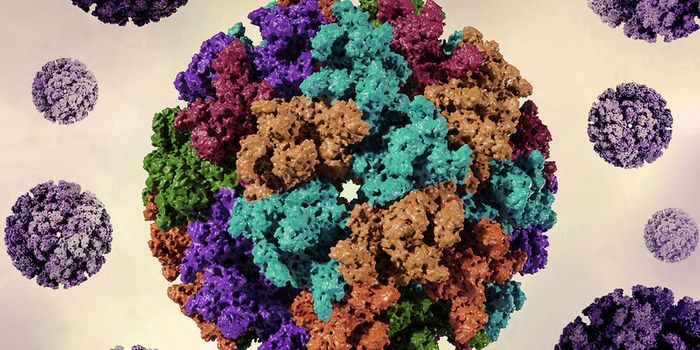Newly Discovered Gut Enzyme Could Function as Disease Biomarker
Bacteria in the gut have a powerful influence on our health, in part because all of those microbes have genes of their own, and they can produce and release bacterial proteins that may act on human cells. Scientists have now characterized an enzyme made by gut bacteria that can remove sugar molecules from the protective mucus lining the gut, enabling the microbes to consume those sugars.
This work, which was reported in Nature Communications, may also have identified a marker of intestinal disease. The enzyme that was studied has a unique mechanism, making it useful as a diagnostic tool.
Cells in the gut constantly generate mucin, which is a major part of mucus. The layer of mucus in the gut acts as a critical barrier that shields the body from the trillions of microbes there; it inhibits inflammation and infection in gut epithelial cells that would otherwise be caused by the presence of all those microorganisms. Mucins can contain sugar molecules called glycans, which gut bacteria trim off and can then use for energy. The researchers found that an enzyme that resides on the surface of some bacteria trims part of the mucin way, and the microbes can consume it.
"Mucus is structured a bit like a tree, with lots of different branches and leaves. Lots of the enzymes discovered so far might clip away some of the leaves to eat, but the enzyme we studied will clip away a whole branch - that's quite a distinctive mechanism and it gives us a useful biomarker for studying disease," explained the lead researcher, Dr. Lucy Crouch of the University of Birmingham's School of Biosciences.
Changes in mucin levels have already been linked to certain diseases, so it may be possible to do a biopsy to measure the levels of glycans in the gut. That information could be used to determine whether there is a risk of gut disease.
To learn about this process, the scientists looked at tissue taken from adults with colorectal cancer or ulcerative colitis and preterm infants with a serious gut inflammatory disorder called necrotizing enterocolitis in which the gut can begin to die.
The investigators also tagged the glycans with fluorescence to learn more about their structures.
"Although we still don't fully understand what the glycan structures are made from and how these vary between different tissue types, we can see that the differences in structure between health and non-healthy tissue [are] quite distinctive," said Crouch. "We hope to be able to use these enzymes to start producing better diagnostics for the very early stages of these diseases."
Sources: AAAS/Eurekalert! via University of Birmingham, Nature Communications









